Spring 2023
Signs of an unprecedented rainy season can be seen everywhere along the high-speed rail alignment—but most notably where flooding became a major concern in Kings and Tulare Counties.
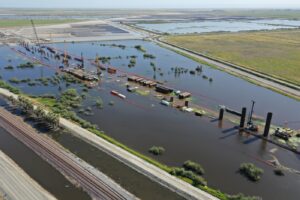 The Authority and construction contractor Dragados-Flatiron Joint Venture continue to work with local agencies in coordination with CalOES to provide assistance. High-Speed Rail has provided k-rail, embankment and equipment to help with road closures and to build levees to prevent flooding in certain areas. The Authority also coordinated with local dairy farmers to use high-speed rail property to transport and relocate livestock. Crews reopened Whitley Avenue, which was recently closed for high-speed rail construction– to serve as an additional evacuation route for residents in the City of Corcoran.
The Authority and construction contractor Dragados-Flatiron Joint Venture continue to work with local agencies in coordination with CalOES to provide assistance. High-Speed Rail has provided k-rail, embankment and equipment to help with road closures and to build levees to prevent flooding in certain areas. The Authority also coordinated with local dairy farmers to use high-speed rail property to transport and relocate livestock. Crews reopened Whitley Avenue, which was recently closed for high-speed rail construction– to serve as an additional evacuation route for residents in the City of Corcoran.
The Authority will continue doing everything it can to assess short- and long-term challenges flooding may have on the project and the surrounding communities.
Updates Per Project
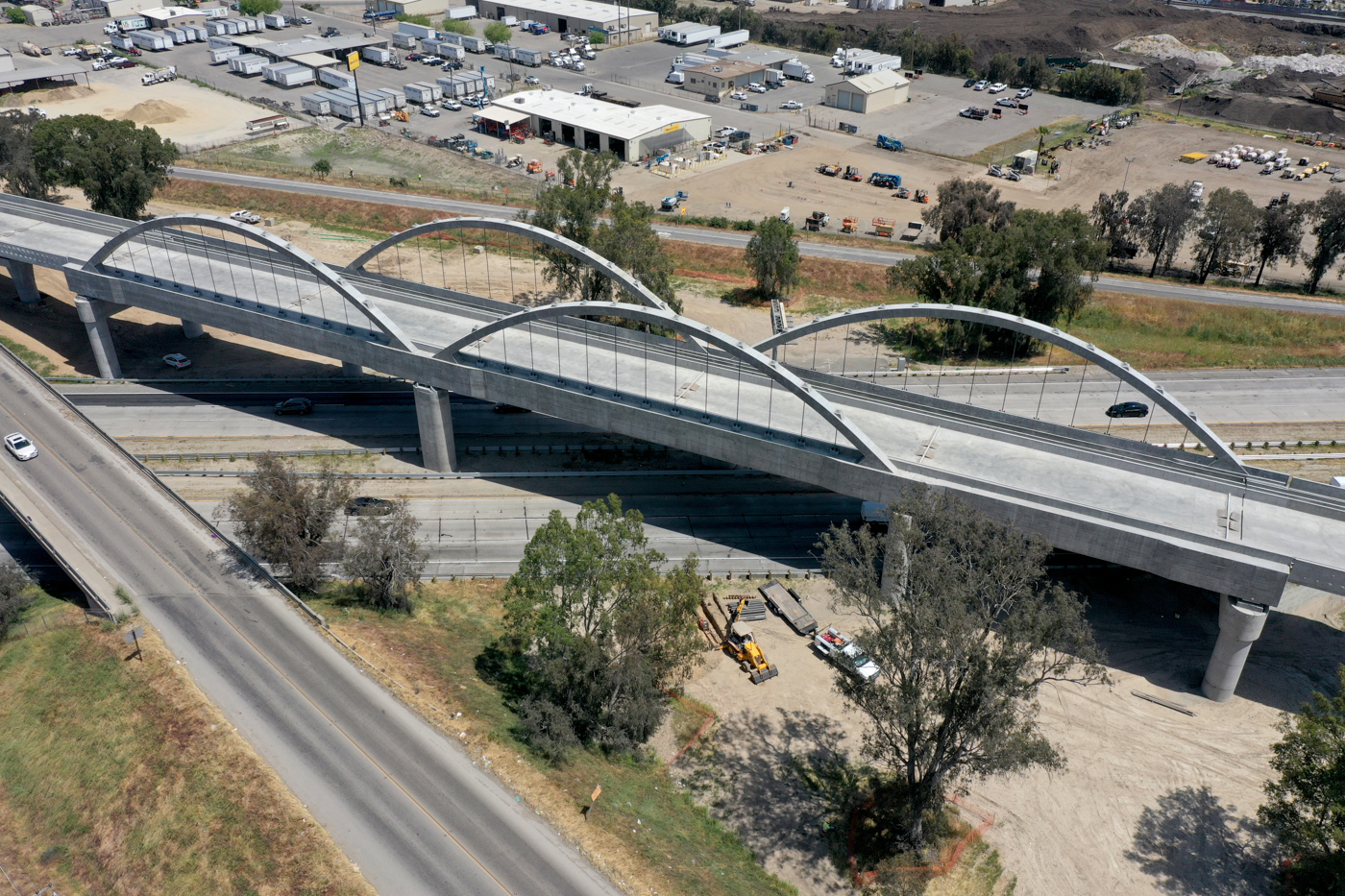
Cedar Viaduct
The Cedar Viaduct, the southern gateway into the Central Valley is now complete. Stretching over State Route 99 and taking future high-speed trains over the highway along with Cedar and North Avenues, the signature double span of arches can be seen from both sides of the highway. Construction on the Cedar Viaduct began in 2016. More than 8.6 million pounds of steel rebar and more than 37,000 cubic-yards of concrete were used to complete this signature structure. The Cedar Viaduct spans more than 3,700 feet long and more than 40 feet wide.
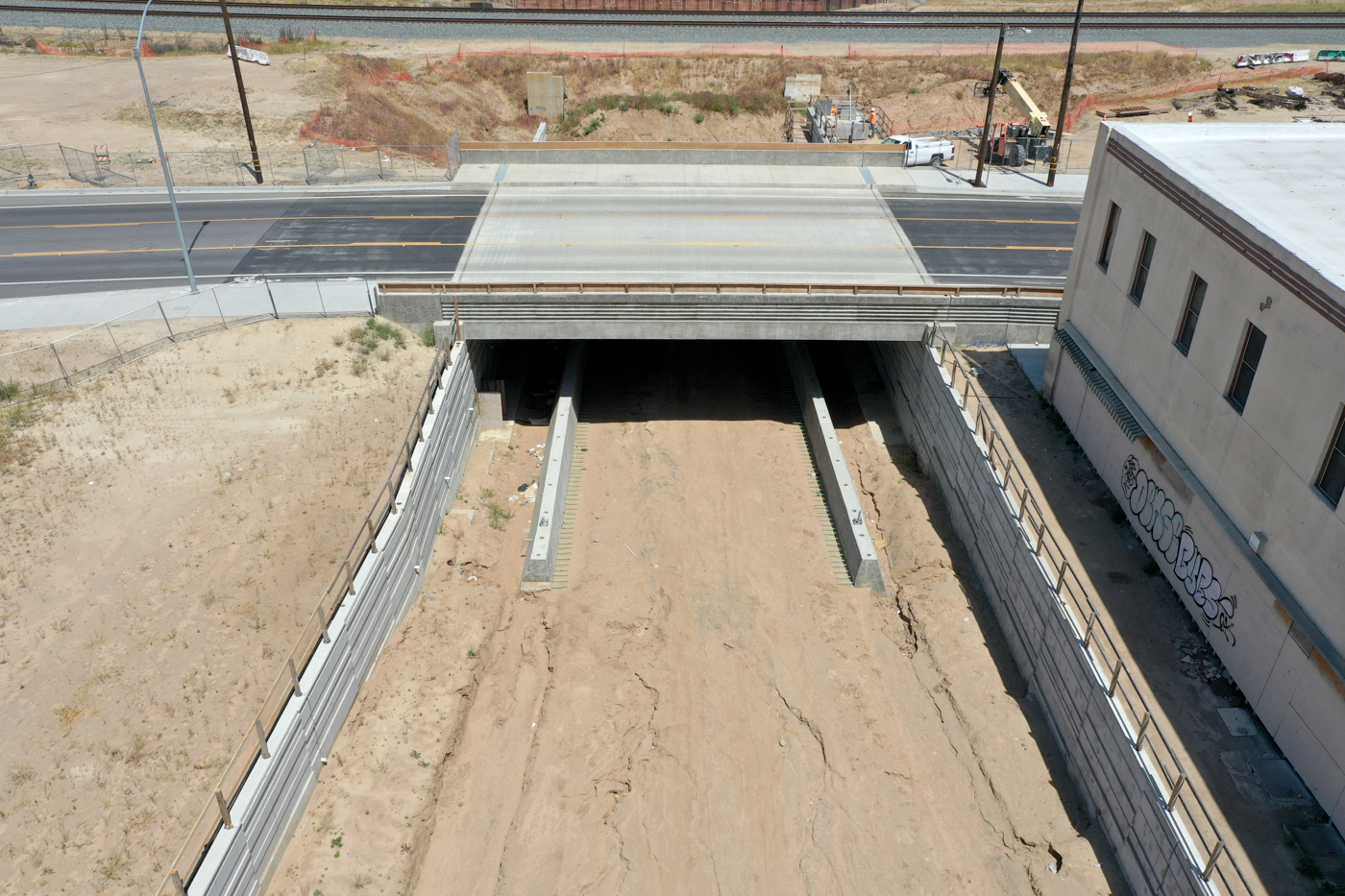
Tulare Street Undercrossing
Crews are now working on the east side of the Tulare Street Underpass. Crews have removed utilities in the area and continue to excavate dirt and install shoring – supports that help prevent the movement of soil – for the construction of the future underpass and new bridge for the Union Pacific railroad. Bridgework will begin in the coming months. In addition, and just slightly south, a new cul-de-sac was completed on Kern Street near Chuckchansi Park stadium parking, just in time for the Fresno Grizzlies baseball season.
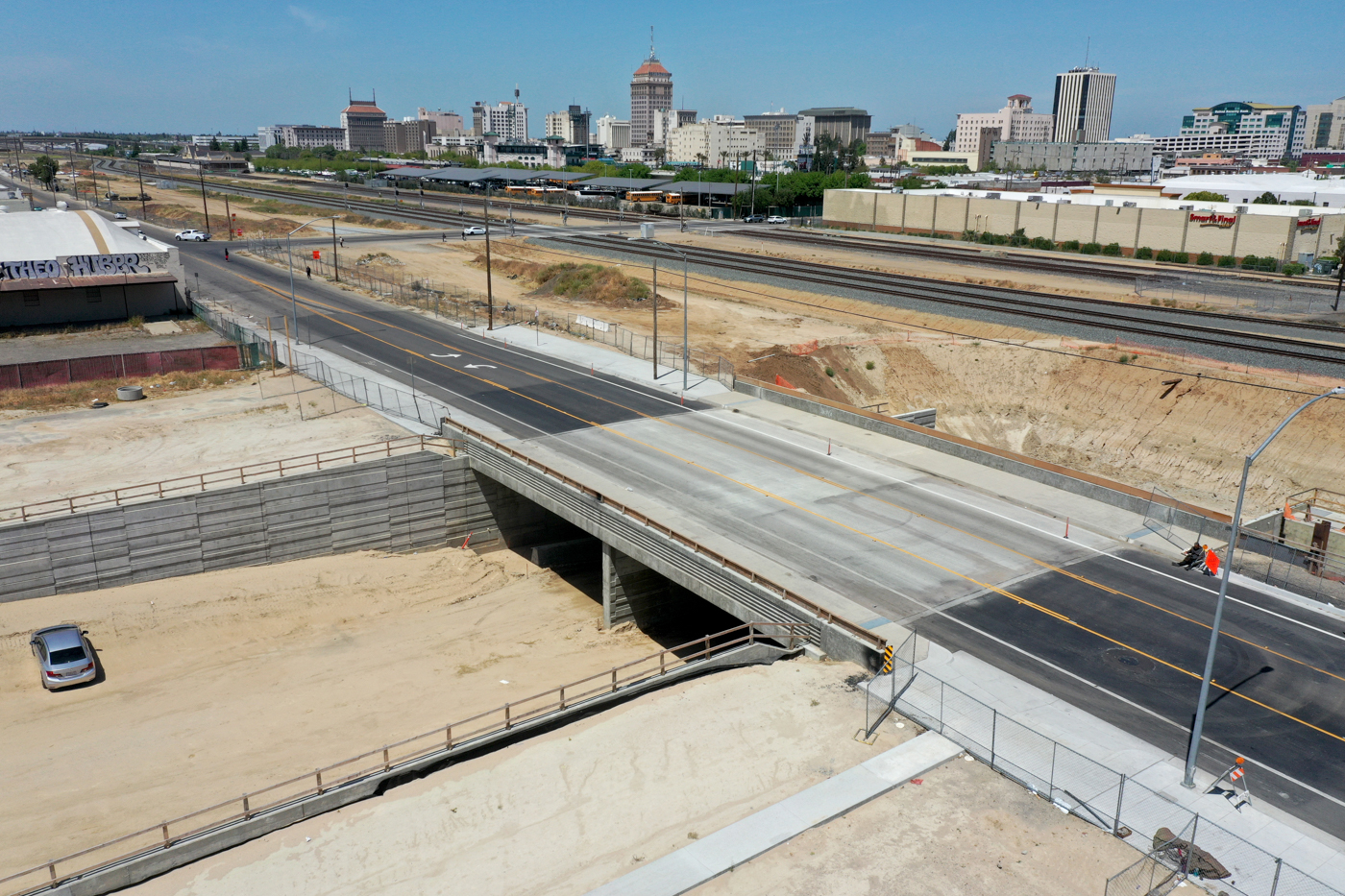
Ventura Street Undercrossing
On Ventura Street, more utilities are being moved and shoring is being stalled to make way for the underpass. Crews are continuing to work on the retaining walls west of the Union Pacific tracks. Earlier this year, crews hit a milestone by completing the G Street Bridge that spans over the Ventura Street Underpass which is now open to traffic.
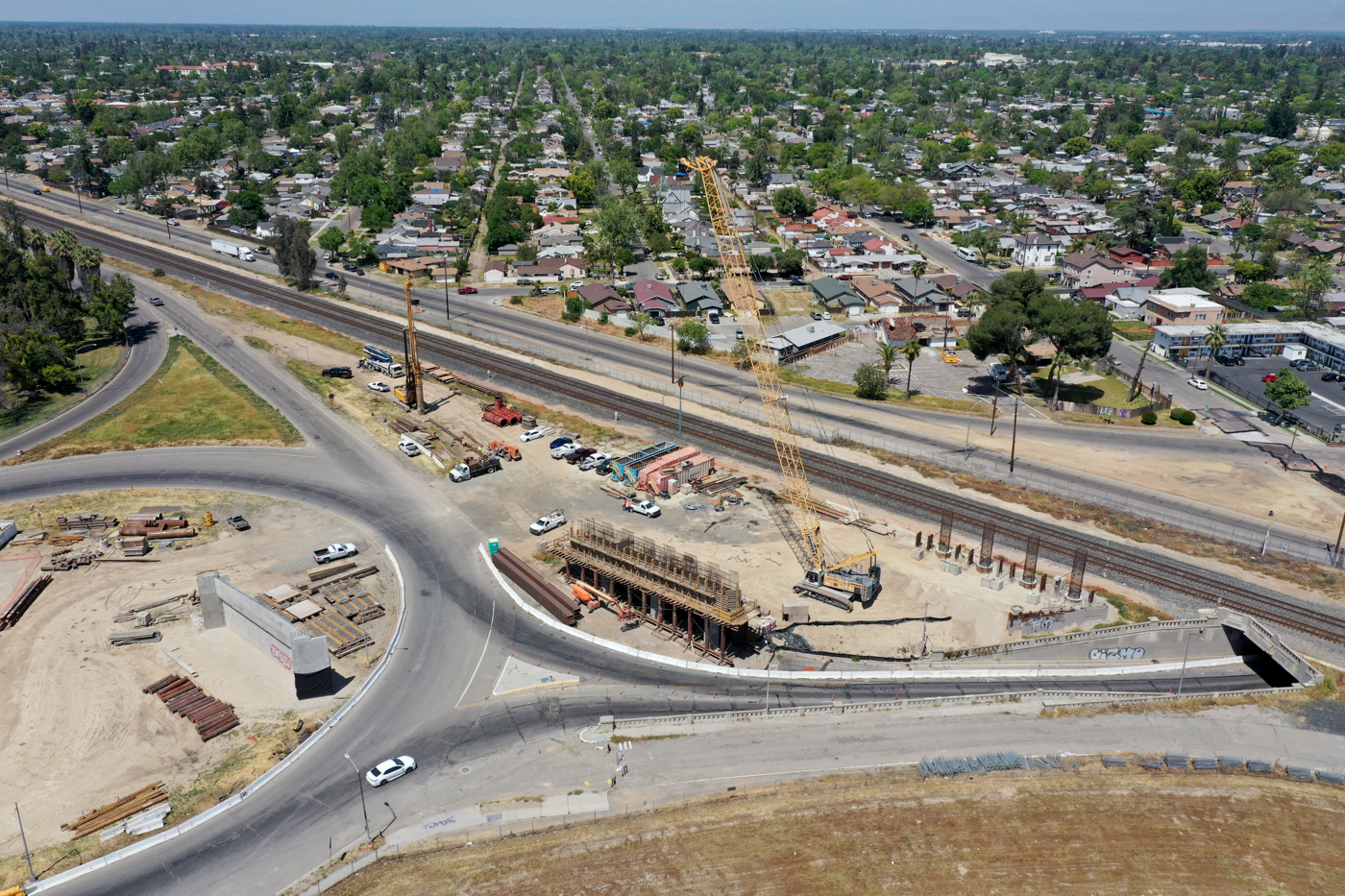
Belmont Avenue Grade Separation
At the Belmont Avenue Grade Separation, crews recently completed the abutment wall on the west side of the overpass. Abutment walls are part of the substructure of a bridge, including overpasses, and provide vertical and lateral support from the superstructure to the foundation. These walls also act as retaining walls by retaining embankment that will be placed in the future. Crews have also completed a few columns and are now working on the bent cap. A bent cap is an intermediate support that sits on top of a group of piles to help disperse lateral and vertical loads. The bent cap supports the girders and transfers loads to the bent columns. To the east, crews are working on several utility relocations including relocating PG&E, water and storm drains.
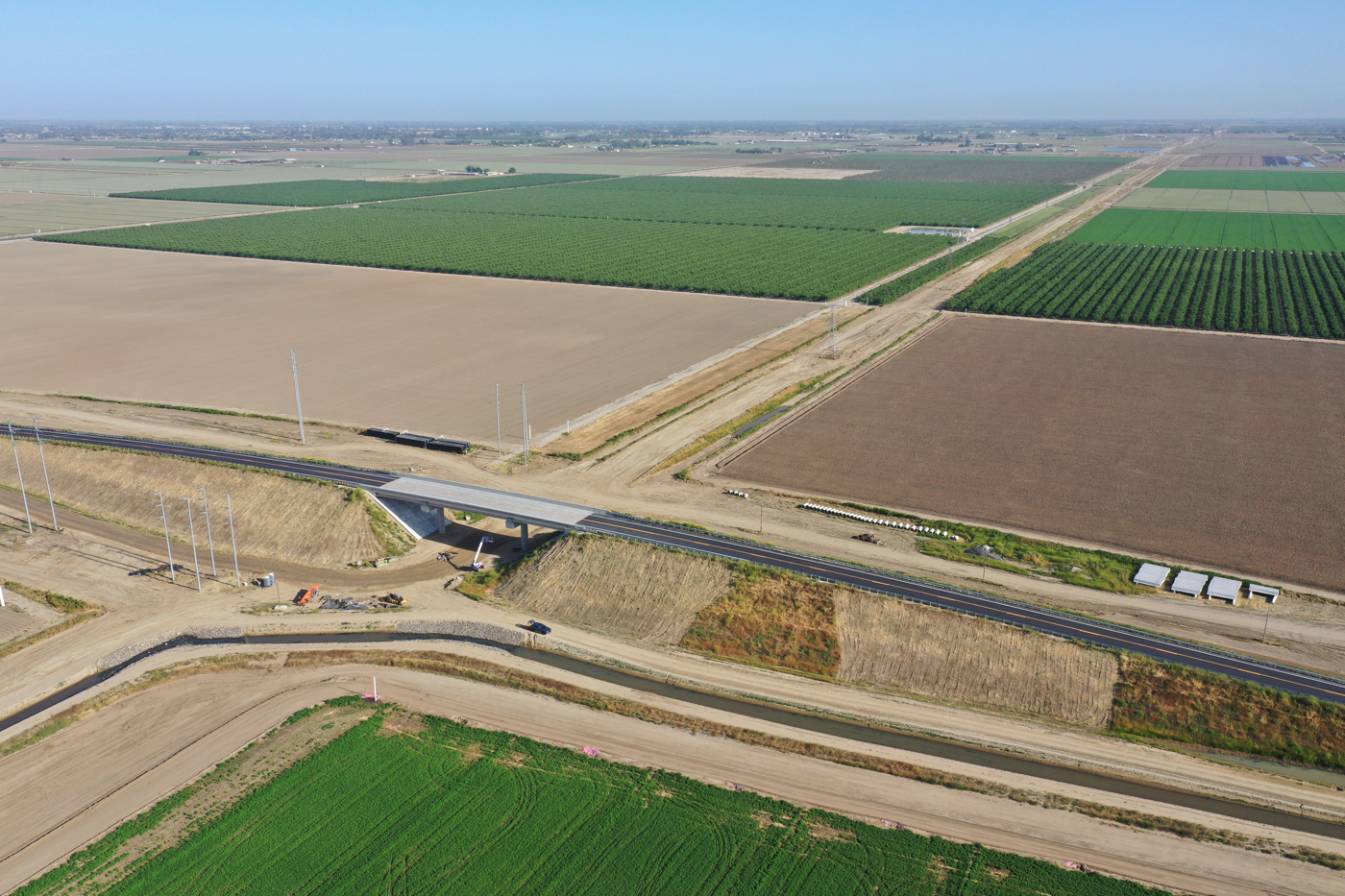
Grade Separations in Fresno and Kings Counties
Construction crews are making headway at a number of high-speed rail grade separations in Fresno and Kings Counties – some of which are nearly completed. Both Dover Avenue and Idaho Avenue grade separations in Kings County are paved and ready to be striped and opened to traffic.
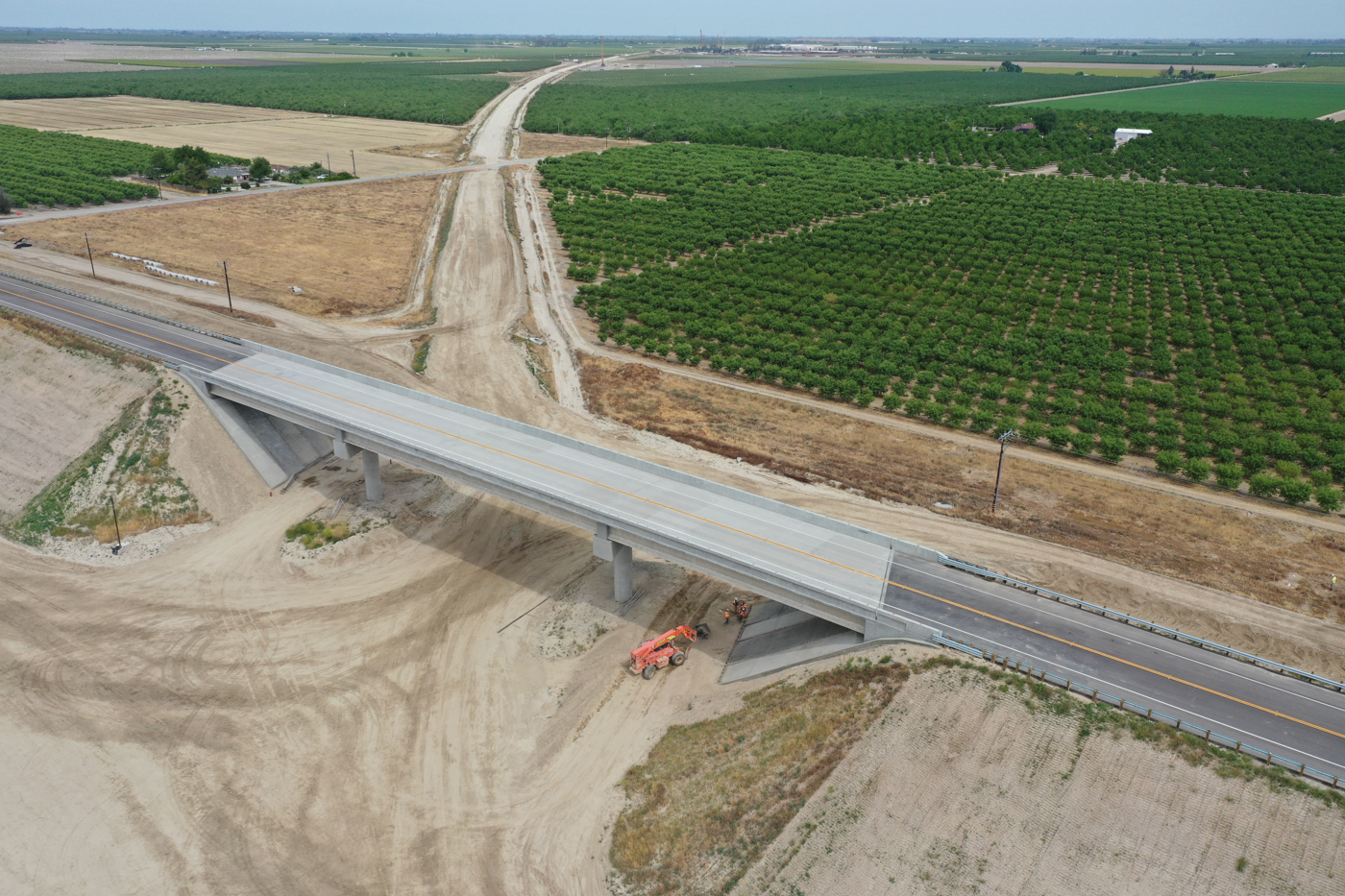
Elkhorn Avenue Grade Separation
In Fresno County, the Elkhorn Avenue Grade Separation is paved and ready to be striped and open for future traffic.
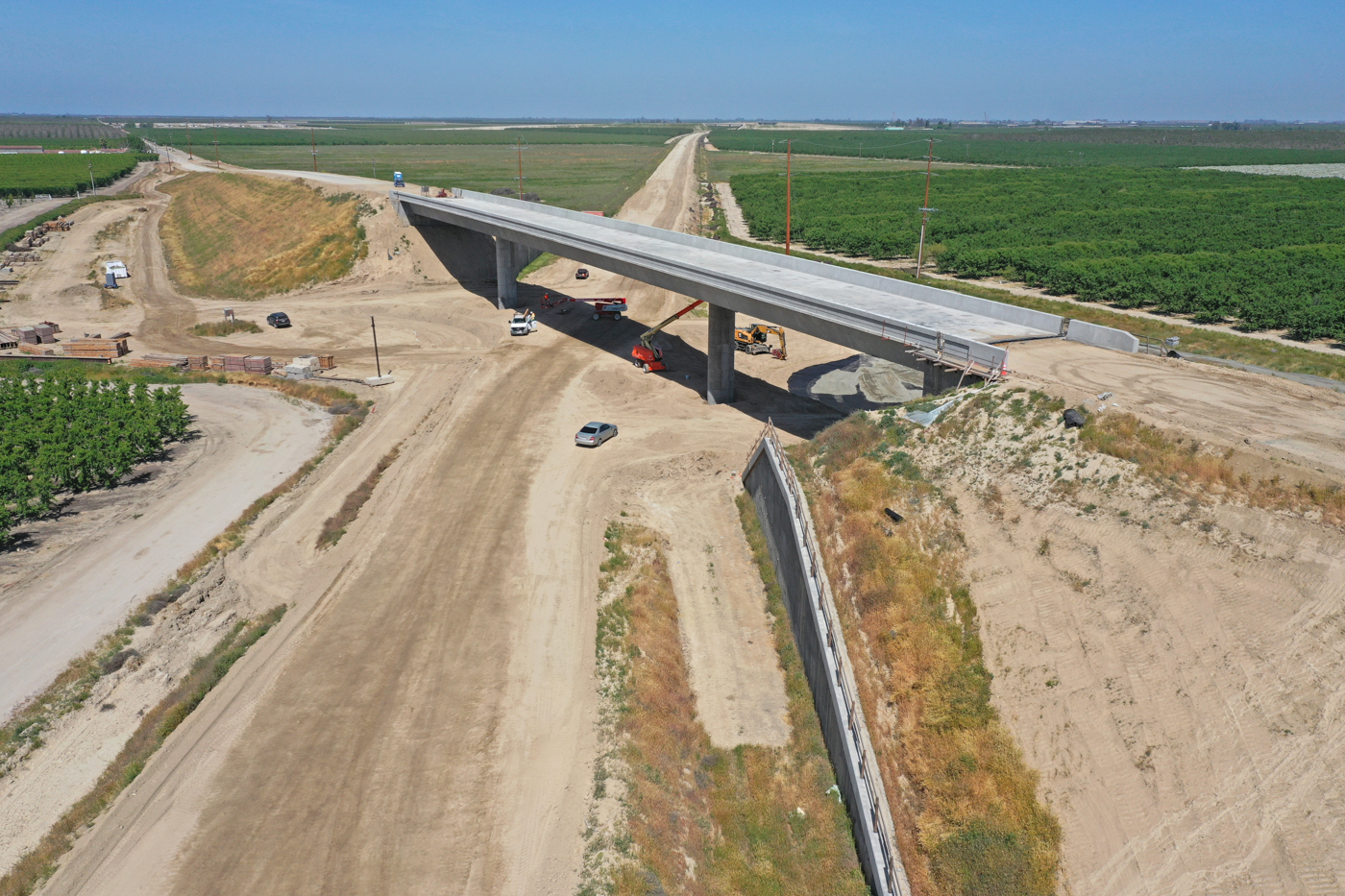
Davis Avenue Overcrossing
At Davis Avenue, crews recently post-tensioned the bridge and are now working on the backwalls. Ironworkers have tied rebar and crews have recently placed concrete to form the barrier rails on top of the structure. The roadway will be paved in the coming weeks.
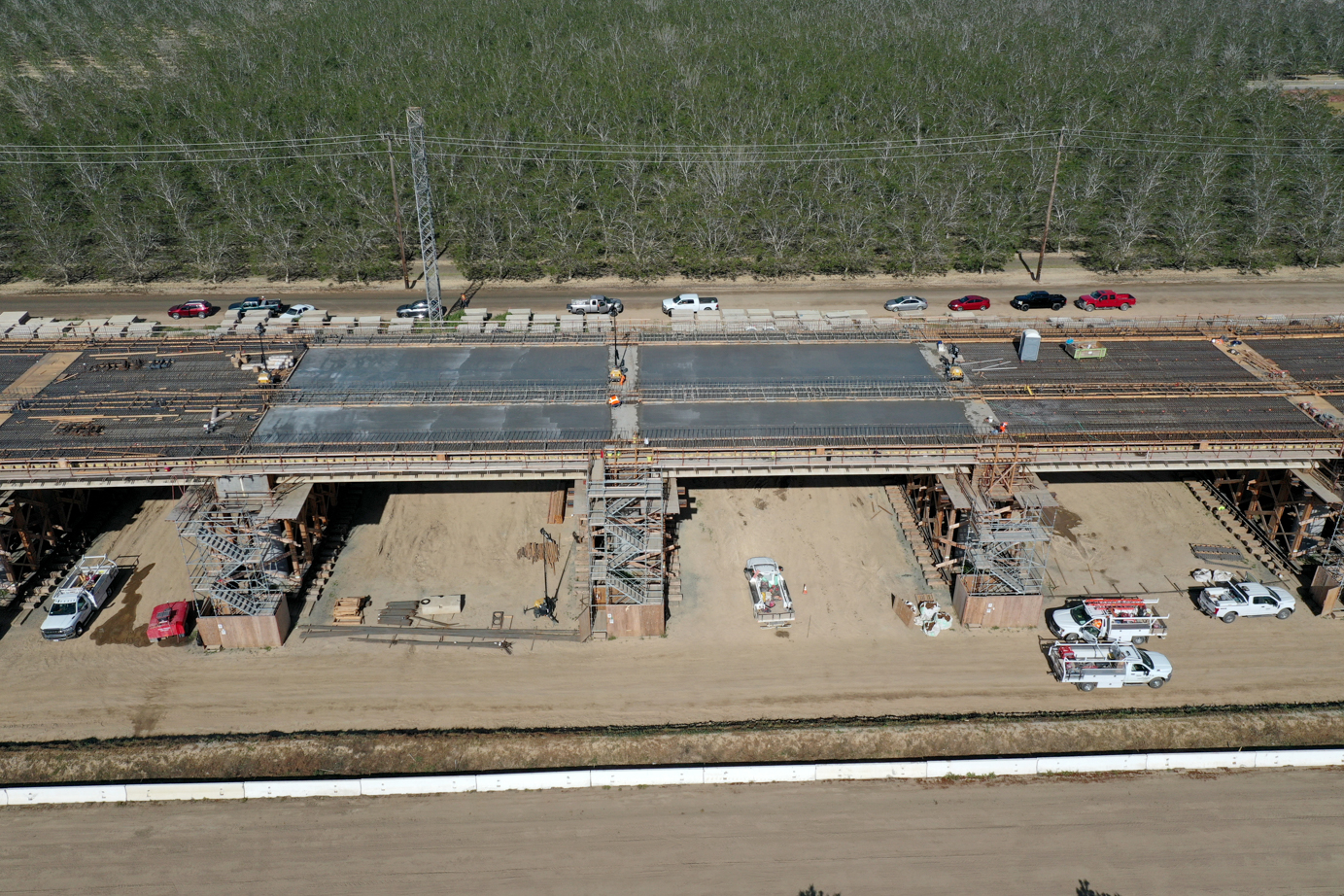
Hanford Viaduct
To date, 284 of the 978 pre-cast concrete girders have been placed on the Hanford Viaduct. Ironworkers are working each day to tie rebar for the deck and parapet walls of the structure. Over the last few months, workers have placed concrete for the diaphragms of the structure, which bring the girders set between each span of columns together.
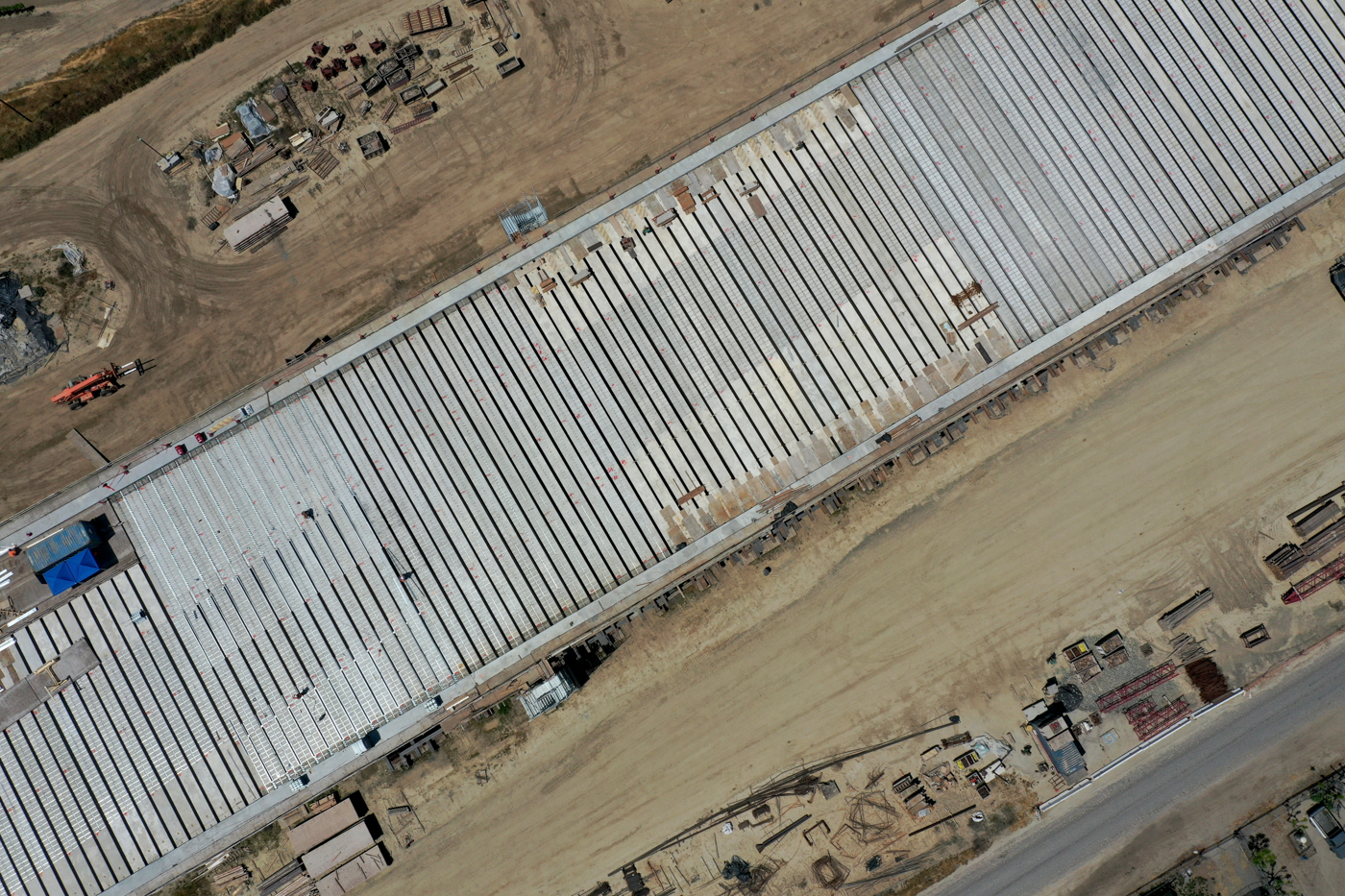
Conejo Viaduct
Earlier this year, the last two of the 248 pre-cast concrete girders were placed for the pergola section of the Conejo Viaduct. Ironworkers and carpenters are now working on the upper edge beams of the structure, the portion of the structure that provides support and ties the pre-cast concrete girders together. To date, more than 9,000 cubic-yards of concrete have been placed to form the edge beams for the structure, with another 1,400 cubic-yards still needing to be placed.
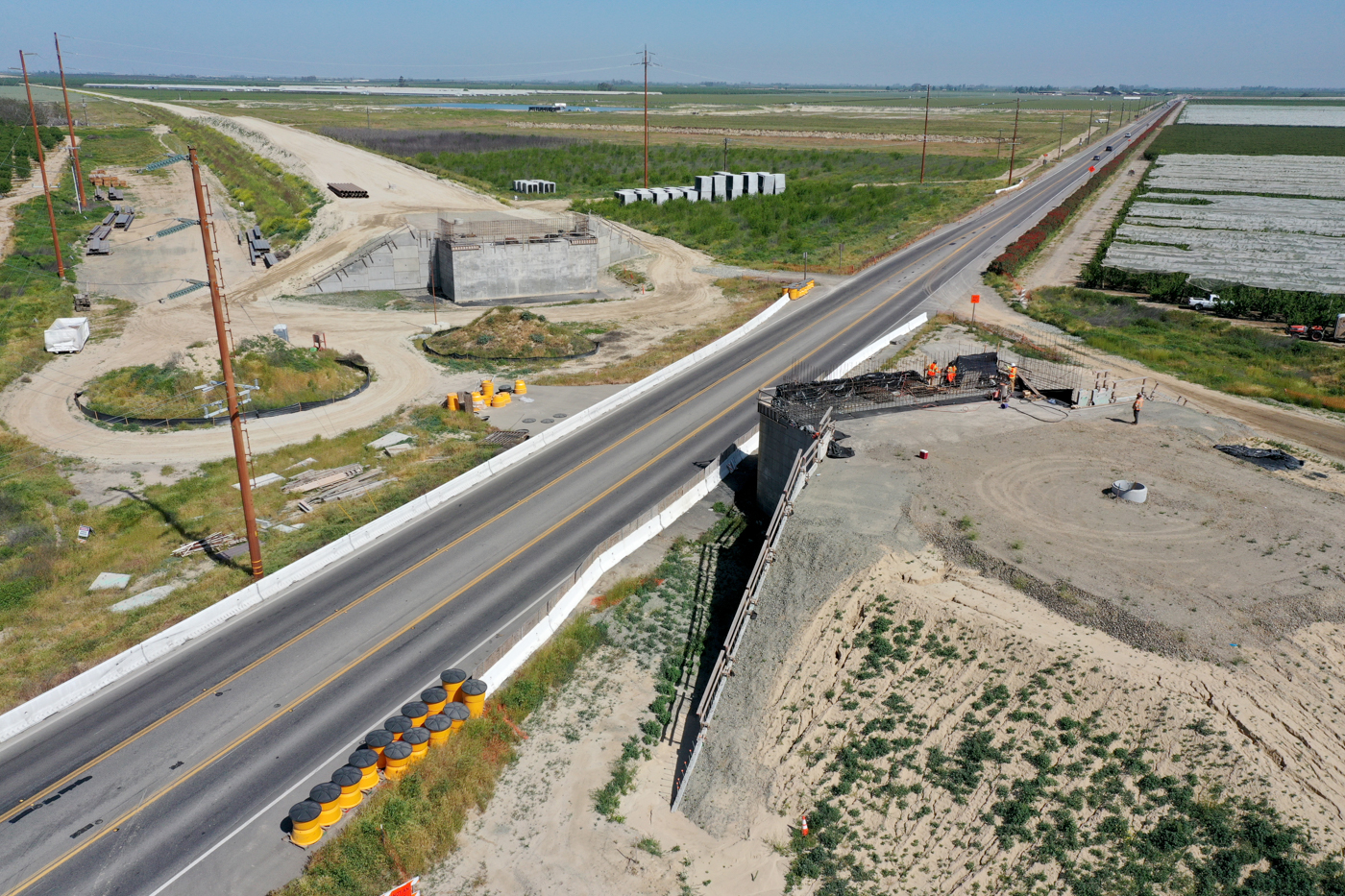
State Route 43 Tied Arch Bridge
Driving along State Route (SR) 43, you can see more than 150,000 cubic yards of embankment fill that has been placed to form the guideway on both sides of the Tied Arch Bridge. The guideway is where future high-speed trains will travel before it crosses over the highway and traffic, between Fresno and Kings counties. The Tied Arch Bridge spans 249-feet long and 52-feet wide.
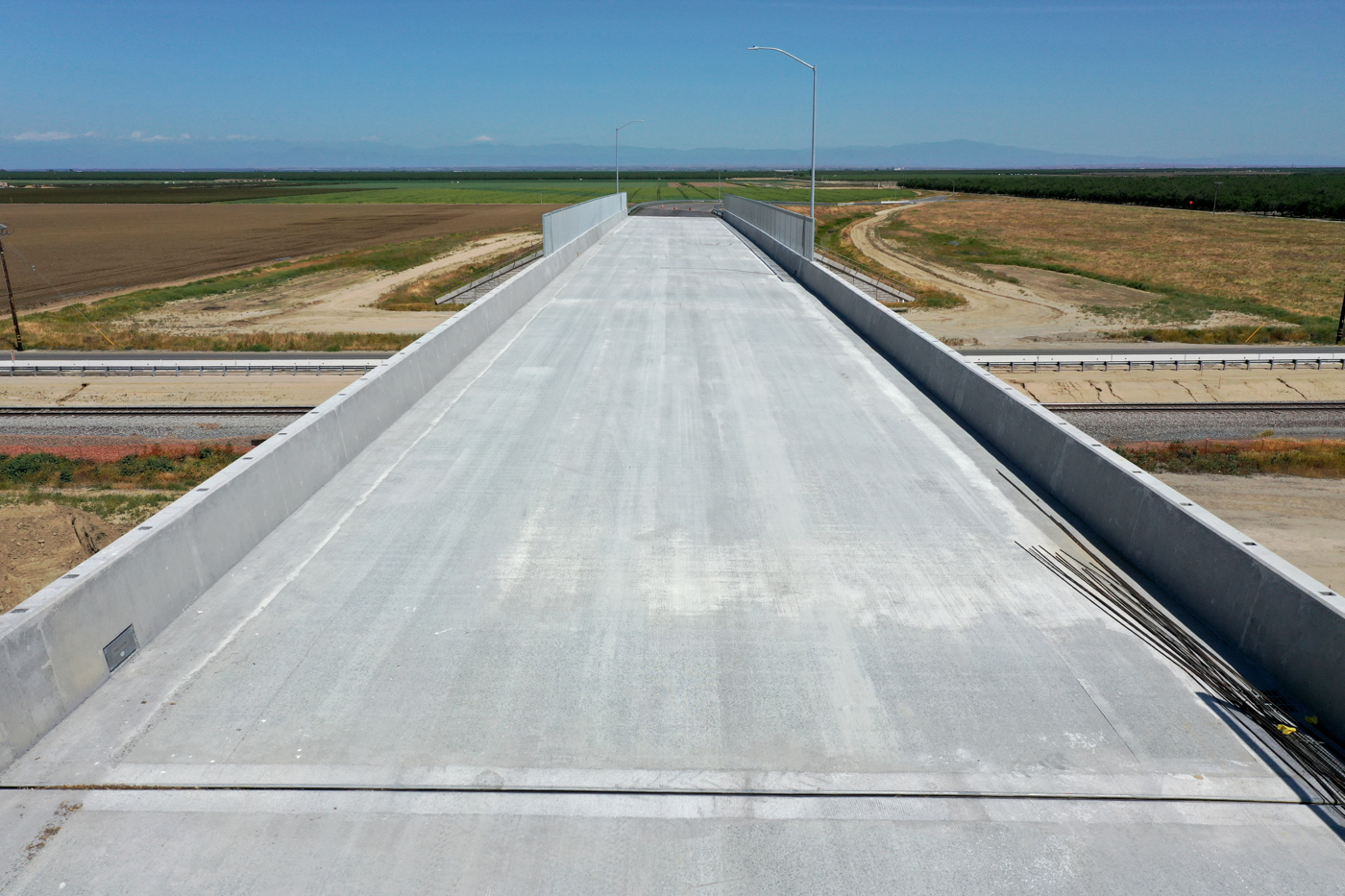
McCombs Road Grade Separation
At the McCombs Road Grade Separation, crews are working to realign and tie in the existing McCombs Road slightly north onto the future overpass. Crews have removed portions of the old road and are hauling aggregate to connect the roadway to the completed structure. The roadway will then be paved, striped and opened to traffic later this spring.
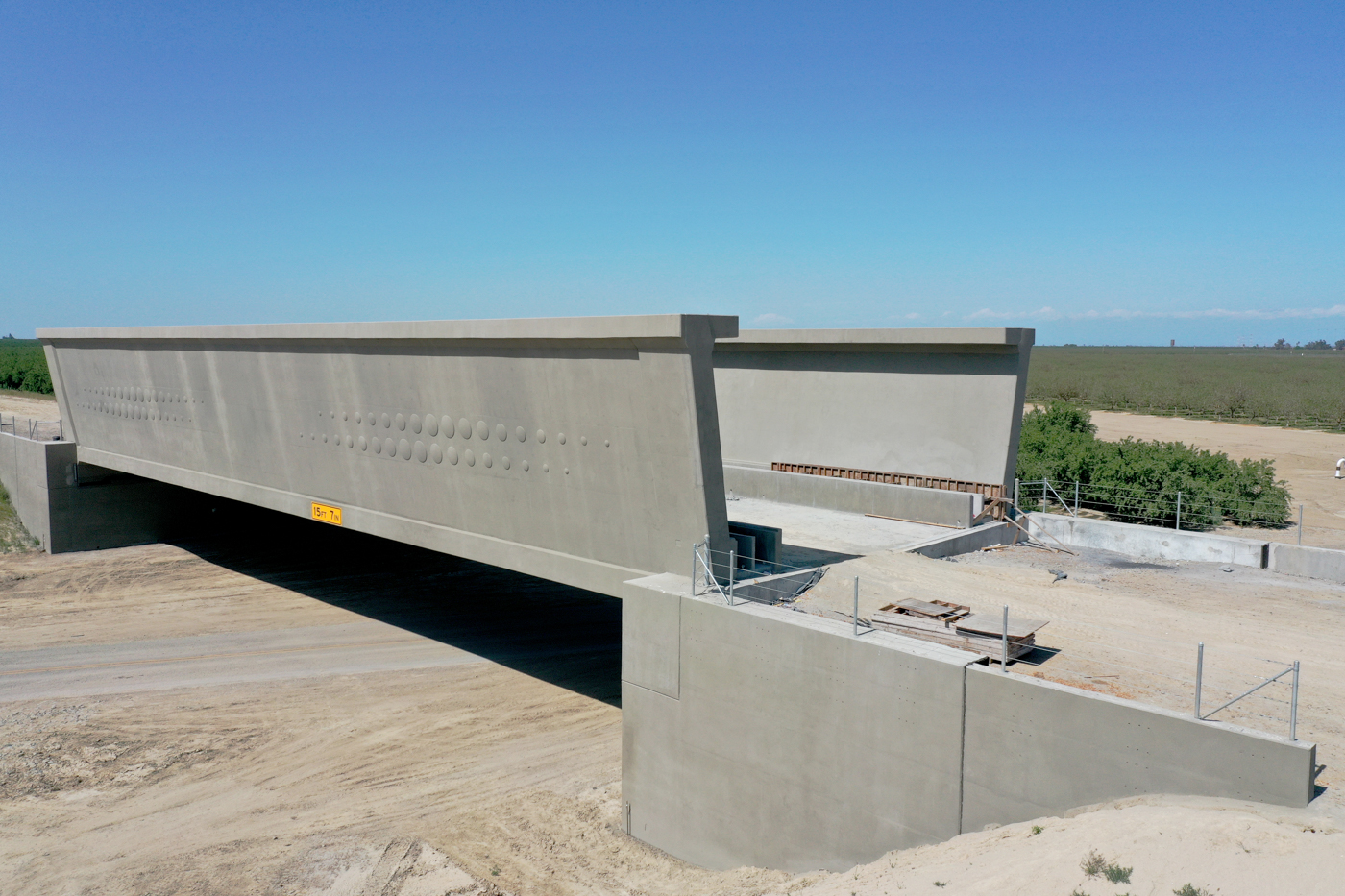
Peterson Road Bridge
The Peterson Road Bridge is now complete. This elevated structure will take high-speed trains over the existing roadways in Kern County. The Peterson Road Bridge is 153 feet long and 52 feet wide built to accommodate two sets of high-speed rail tracks.
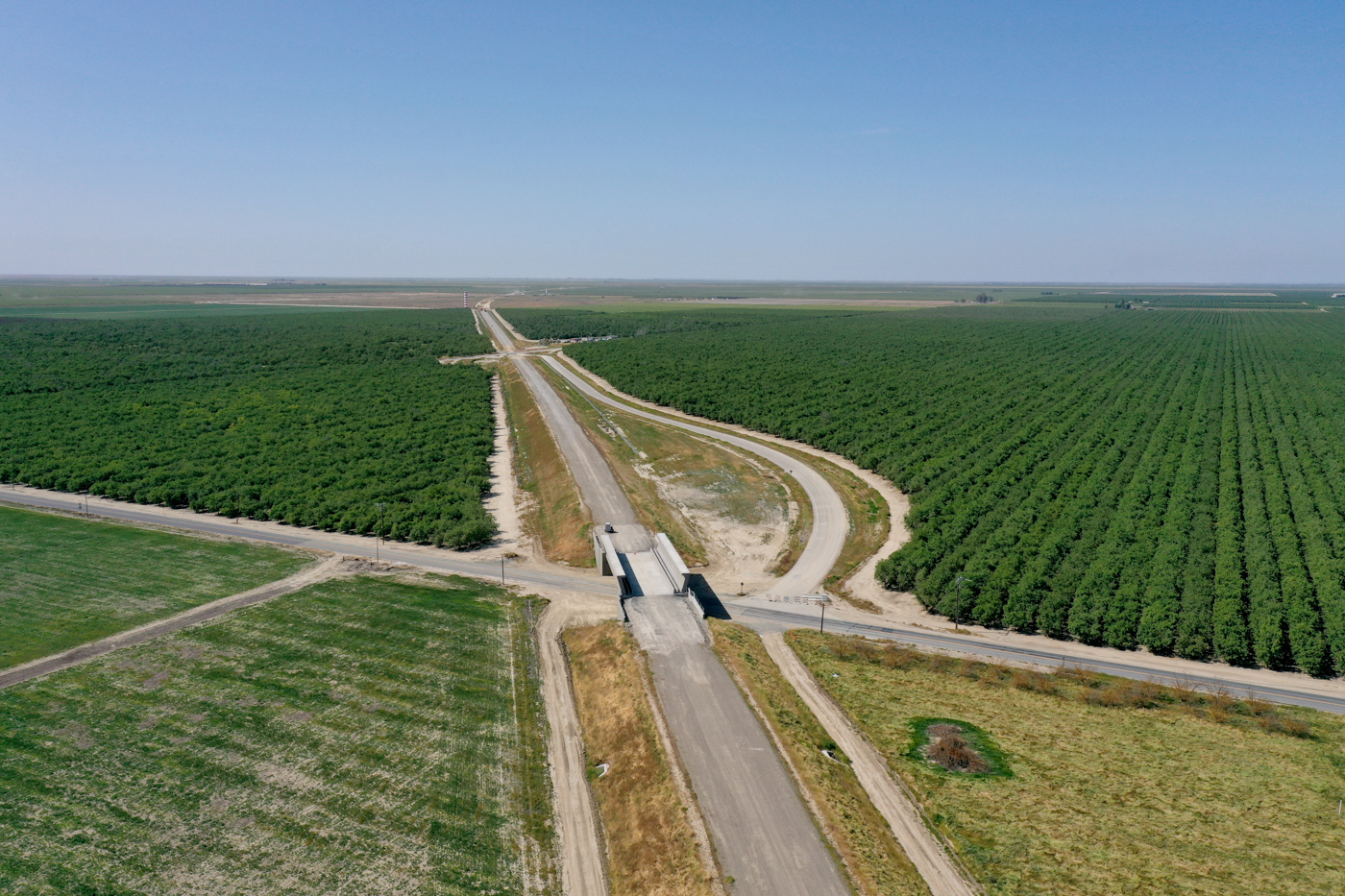
Pond Road Viaduct
The Pond Road Viaduct is now complete. With the civil work complete, crews will now be tasked to haul embankment and connect the structures to the high-speed rail alignment. The Pond Road Bridge is 121-feet long.
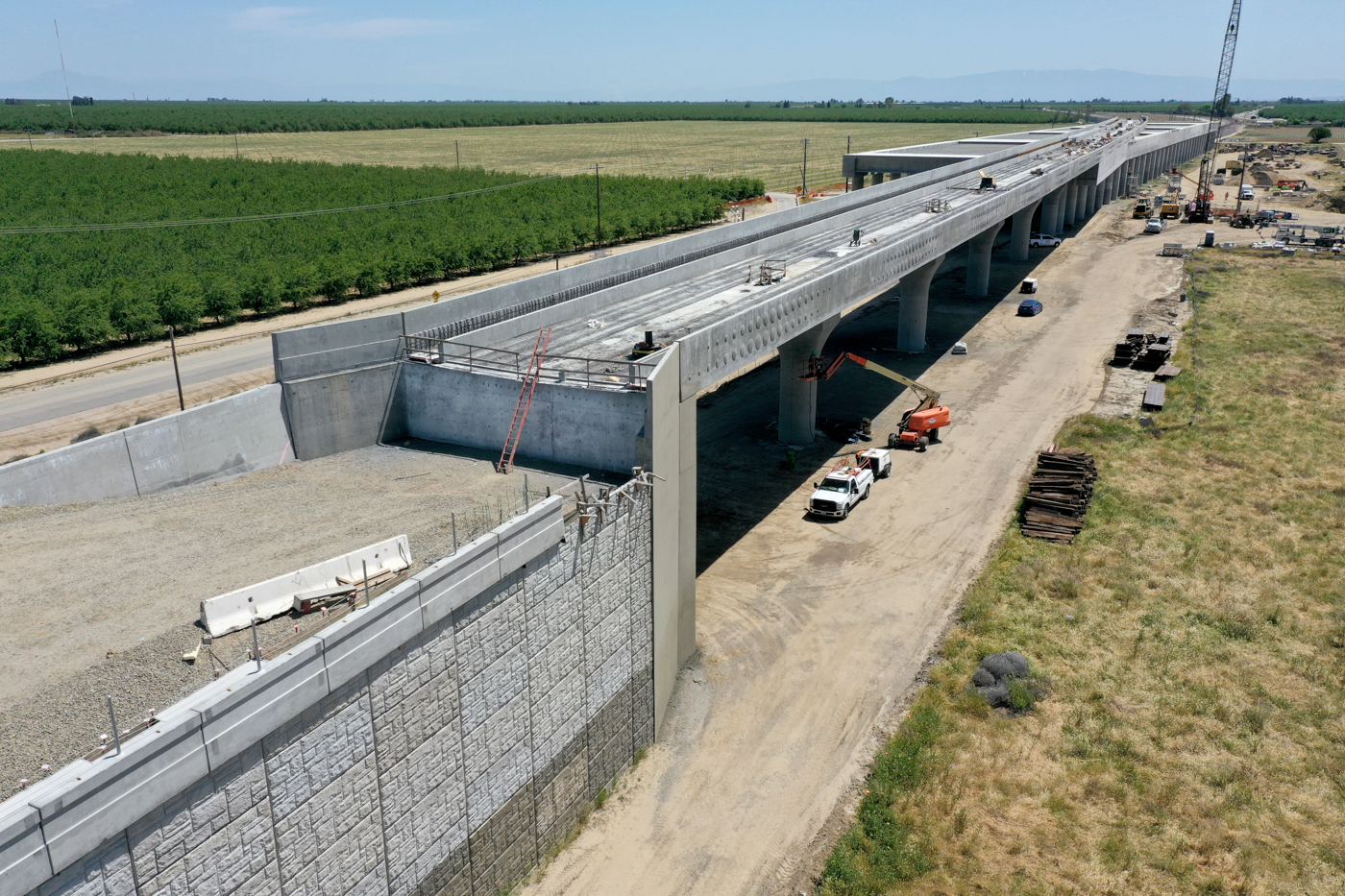
Wasco Viaduct
Currently, crews are placing the final touches on the Wasco Viaduct. Along the pergola section, crews have worked to complete the parapets – or derailment walls – of the structure. More than 240,000 pounds of steel and 800 cubic yards of concrete were installed in the last few months. Crews also completed the installation of the expansion joints of the structure. Expansion joints are separations between two sections that allow for temperature-induced expansion or contraction without cracking or damaging the structure. The Wasco Viaduct is more than 2,000 feet long and carries trains through Kern County and over the BNSF freight tracks.